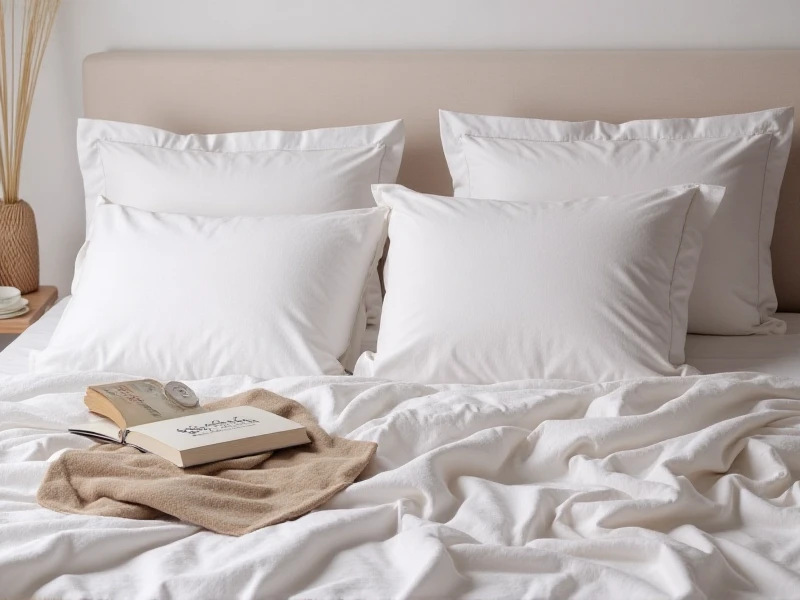The Silent Evolution: How Textiles Are Rewriting The Rules of Modern Living
2025-06-03

From ancient civilizations weaving flax for clothing to astronauts relying on cutting-edge technical fabrics, textiles form more than just the fabric of our clothes – they shape our environment, our industries, and our future. This dynamic sector, far from being purely traditional, is undergoing a remarkable renaissance driven by innovation and sustainability concerns, pushing the boundaries of what’s possible.
Woven Through Time: The Ancient Art Meets Modern Science
Textiles boast millennia of history, a testament to humanity's fundamental need for protection, comfort, and expression. Archaeological finds reveal intricate linens from Egypt and vibrant silks from ancient China, highlighting skills refined over centuries. Today, this deep well of tradition fuels modern creativity. Artisans collaborate with material scientists, breathing new life into age-old weaving, dyeing, and knitting techniques. Designers revisit historical craftsmanship, integrating it with contemporary aesthetics to produce unique, culturally rich textiles that tell a story. This blend of heritage and forward-thinking vision ensures textiles remain deeply relevant.
Innovation at the Fibre Frontier: Beyond Cotton and Polyester
The core of the textile revolution lies in material science. Researchers are engineering fibres with properties once deemed fantastical:
Performance Powerhouses: Garments now regulate temperature (phase-change fibres), wick sweat effectively (advanced micro-denier synthetics), repel water at a molecular level (superhydrophobic coatings), and increasingly incorporate conductive threads for discreet health monitoring. Sports brands and adventure wear constantly push these boundaries.
Green Generation: Eco-conscious materials are paramount. Hemp, offering high yield with minimal water, organic cotton reducing pesticide load, and regenerated fibres like Tencel Lyocell (from sustainably sourced wood pulp) gain traction. Pioneering labs are creating fibres from agricultural waste (orange peels, pineapple leaves) and exploring biodegradable synthetics.
Smart and Interactive: Textiles are becoming responsive interfaces. Consider textiles woven with conductive yarns enabling touch-sensitive controls on clothing, light-emitting fabrics for wearable displays, or materials that change colour or texture in response to stimuli like heat or electricity.
Industry Transformation: Efficiency and Responsibility
The textiles industry is a massive global engine facing pressure to adapt:
Digital On-Demand: Technologies like 3D knitting allow for near-seamless garment production with minimal waste directly from computer files. Digital printing drastically reduces water waste and enables rapid customisation.
Sustainable Transparency: Consumers demand knowledge. Blockchain and robust certification schemes aim to trace materials from raw source (e.g., farm verification) through complex global supply chains to the final garment.
Curbing Fast Fashion: While fast fashion offers low costs, its environmental toll is severe. The industry is responding with increasing focus on quality, longevity, recyclability (designing for disassembly), and sophisticated rental/resale models.
The Fabric of a Sustainable Future: Addressing Critical Challenges
As we innovate, we must also address textiles' significant environmental impact:
Closing the Loop: Tackling textile waste is crucial. Innovations focus on efficient sorting and mechanical/chemical recycling to keep valuable fibres (polyester, cotton blends) out of landfills, transforming them into new textiles or other products.
Water Wisdom: Traditional dyeing consumes vast freshwater. Solutions like revolutionary waterless dye technologies (utilising CO2) and precise application methods (digital printing, foam dying) dramatically cut consumption and pollution.
Microfibre Mitigation: Synthetic clothing shedding microplastics during washing poses a marine threat. Research focuses on developing enhanced filters for washing machines, exploring coatings to reduce fibre shedding, and designing fabrics that inherently shed less during wear and laundering.
Tomorrow's Threads: Intelligent, Healing, Functional
The trajectory points towards textiles becoming even more integrated with technology and biology:
Bio-Integration: Imagine clothing made from self-repairing fabrics, textiles infused with skin-beneficial compounds (vitamins, soothing agents), or seamlessly incorporating medical-grade sensors offering continuous, non-invasive health monitoring.
Responsive Environments: Beyond wearables, textiles will define smarter spaces. Think self-cleaning upholstery triggered by light, curtains that dynamically adjust opacity for light management and energy efficiency, or sound-absorbing textiles optimising rooms.
The Fourth Industrial Revolution: The convergence of materials science, biotechnology, data analytics, and AI will accelerate discovery. Algorithms can predict performance, optimise complex weaves, and identify promising sustainable material combinations faster than ever.
The Ever-Present Thread
Textiles, ancient in origin but relentlessly modern in application, continue to shape our world. They move beyond the runway, becoming solutions for energy, health, safety, and environmental challenges. Technological integration and sustainable commitment are propelling textiles into an era where function, form, intelligence, and ecological care are woven together, creating a fabric that truly supports our planet and enhances all aspects of life.
Have you touched an innovative textile solution lately? From performance jackets to sleek Tesla interiors, technical textiles showcase this quiet transformation impacting daily life. Explore sustainable brands, champion transparency, and embrace textiles crafted for longevity. The future of modern textiles arrives seamlessly, one ingenious thread at a time.
Category: